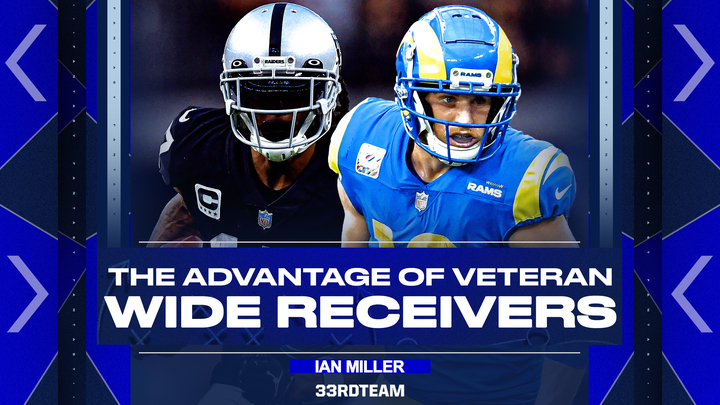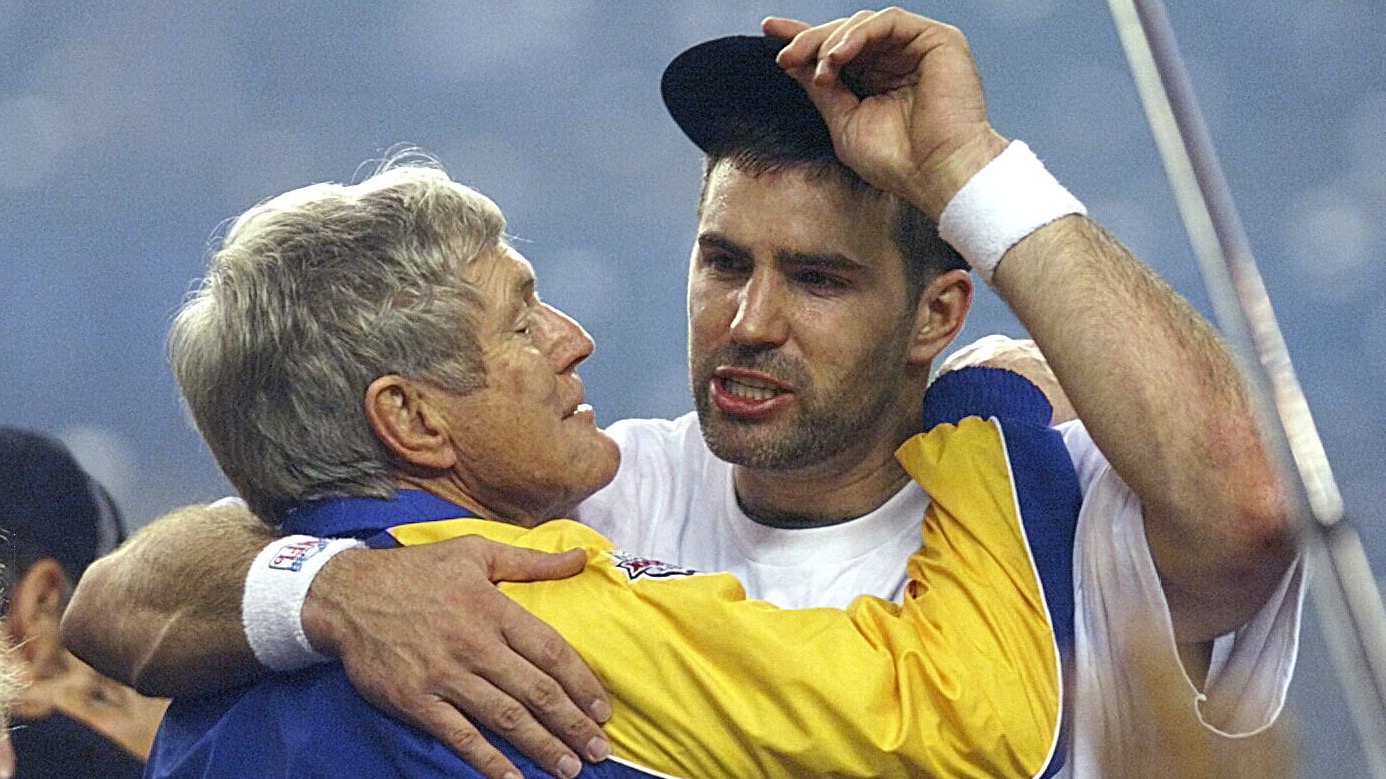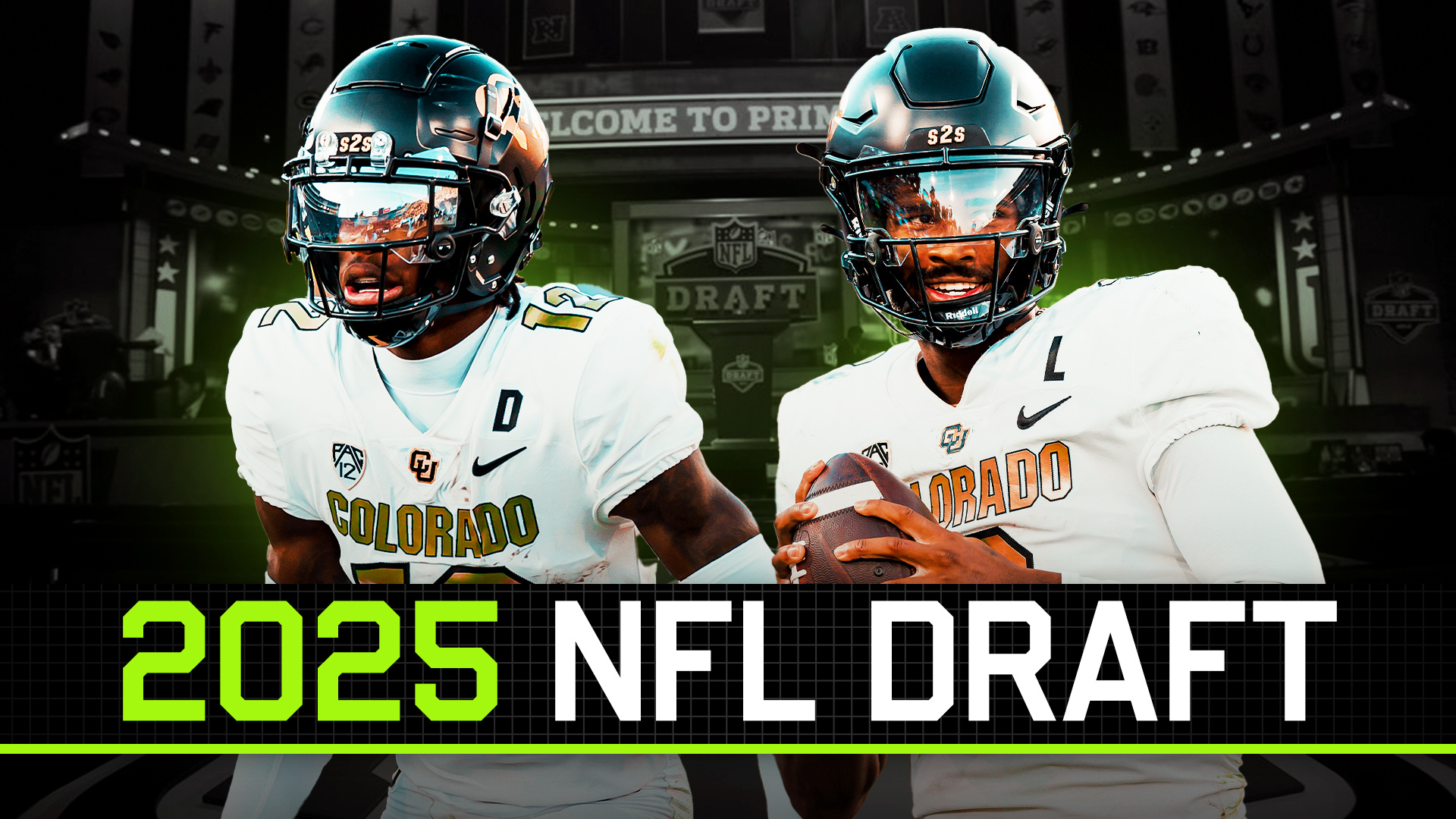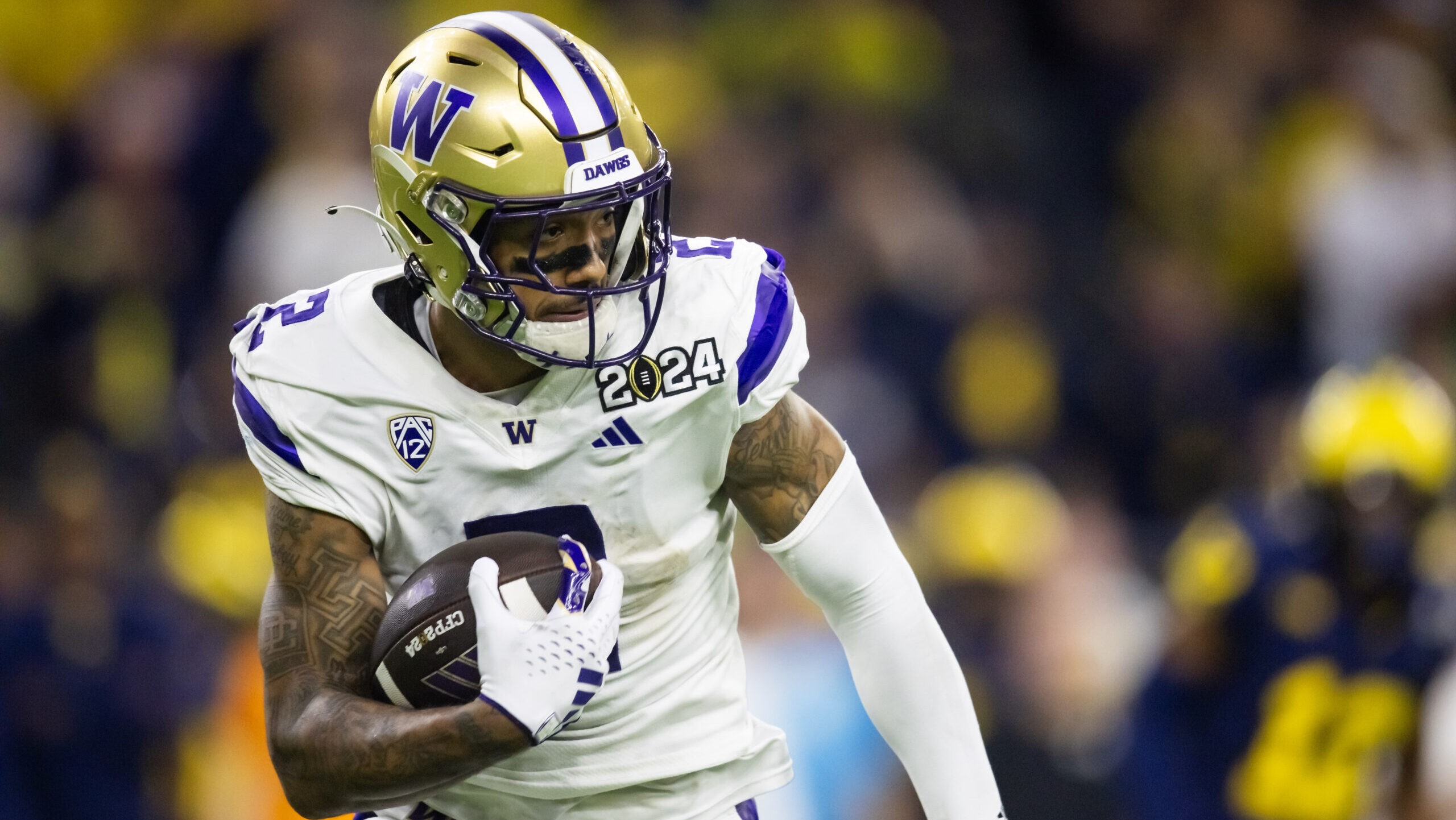Analysis
7/26/23
7 min read
The Advantage of Veteran Wide Receivers in Dynasty

Consensus tends to view dynasty in a three-year window, which isn’t a bad approach by any means. It forces you to maintain year-over-year stability with your roster in hopes that your team won’t become a train wreck in a couple of seasons. But what if I told you that you could take advantage of other players using this common approach in dynasty? The key to this advantage resides in how fantasy players value veteran wide receivers.
Veteran Discounts
If we look at fantasy points per game last season without any context for age, these receivers’ average draft position heading into 2023 wouldn’t make much sense. Cooper Kupp finished as the WR1 with 22.2 points per game but is currently valued as the WR14. While Davante Adams finished as the WR6 with 19.6 points per game and is going off the board as WR17.
But adding context, we can understand why they are going much lower than last year’s fantasy output, and it’s not because we can’t have a high output projection for them again in 2023. It’s because they are aging assets in the dynasty world. Kupp and Adams are both headed into their age 30 season, but what if the ADP discount is the secret to us winning our leagues?
Exaggerated Age Cliff
You may be saying, “Ian, why would I want to buy declining assets in dynasty? The floor could easily fall from underneath them, they are 30 years old.”
While there may be some truth in the floor being murkier than a player in their mid 20’s, the likelihood that their floor falls out from under them immediately is greatly exaggerated.
Let’s take Kupp for example, who is heading into his seventh season in the NFL. He’s coming off back-to-back seasons with at least a 28 percent target share, joining Adams, DeAndre Hopkins, Demaryius Thomas, Dwayne Bowe, Antonio Brown, and Brandon Marshall as others to do it in their fifth and sixth seasons.
The average target share of those players in year seven was 29.1 percent, while the average of the group in year eight was 27.2 percent.
It is almost as if we shouldn’t go into the season expecting the drop off to occur. Not to mention the group still averaged over 18 points per game in their seventh season.
We tend to believe as a community that the age cliff for wide receivers occurs around age 29. But we shouldn’t be looking at the wide receiver pool in general when trying to predict the future output of some of the top receivers in the NFL, we’re specifically looking at premier wide receivers — those whose career production holds up against the best of all time. That means going beyond the 2006 draft class, when our database begins, to find hall of fame level comparisons for talents like Kupp and Adams.
What we should be interested in is the late career production of players like Terrell Owens, Andre Johnson, Antonio Brown, Larry Fitzgerald, Randy Moss, Reggie Wayne, Brandon Marshall, Marvin Harrison, and even Jerry Rice. Their late-career production is truly eye-opening.
Owens posted 17.4 points per game in his 11th season (age 33) and a whopping 20.5 in his 12th season (34).
Johnson put up 18.5 points per game in his tenth season (31) and 17.5 in his 11th (32).
Brown, who was dealing with a bit more than age concerns at the time, still posted 17.3 points per game in his 12th season (33).
Fitzgerald produced 17.6 points per game in his 12th season (32) and even 16.3 in his 14th season (34).
Moss went off for 24.1 points per game, a career high, in his tenth season (30) while still putting up an 18.0 in his 12th year (32).
In Wayne’s tenth season (32), he posted 17.6 points per game and followed that up in his 12th season (34) with 16.9 points per game.
Marshall finished his tenth season (31) with a ridiculous 21.1 points per game.
Harrison posted 17.9 points per game in year ten (32) and a staggering 19.0 in year eleven (33).
Finally, Rice needs to be studied in a lab after putting up 22.6, 19.8, 18.4 point per game seasons all after turning 32 years old. Not to mention he posted multiple 15 point per game seasons after the age of 35.
While there are also the wide receivers such as Demaryius Thomas, Roddy White, Chad Johnson, and Marques Colston, something sticks out about their profiles. By the time they hit age 29, none were posting even 16 point per game seasons.
There is always going to be an age risk when it comes to older wide receivers, formerly good or great, but typically we can start to see the decline. With Kupp and Adams, we haven’t seen it yet. But do they belong with the premium wide receivers who aged gracefully in fantasy football?
Premier Profiles?
 Cooper Kupp, Los Angeles Rams
Cooper Kupp, Los Angeles Rams
Since the 2006 draft class, Kupp is just the sixth wide receiver to post multiple 30 percent target share seasons in his career. He joins AJ Green, Marshall, Hopkins, Brown, and Adams as the only ones to do it. Kupp is clearly capable of hitting a 30 percent target share again in 2023.
Despite that ability, part of the reason for his low dynasty value isn’t only his age, but his current situation. While the Los Angeles Rams offense isn’t as exciting as it was just a couple years ago, we must remember that despite Matthew Stafford putting up a career low in passing points per game last season, Kupp still managed to post 22.2 points per game for a WR1 overall finish.
It’s clear that Kupp’s profile and immense upside belongs with the premier wide receivers listed above, and if there’s any slight bounce back in Stafford’s passing production, we could very well see another massive season from him at 30 years old.
 Davante Adams, Las Vegas Raiders
Davante Adams, Las Vegas Raiders
Adams is coming off three straight 30 percent target share seasons, joining Marshall as the only other player in NFL history to hit this rare feat. Adams is one of the premier wide receivers in NFL history and belongs to a group where the decline in production comes later than average.
If you wanted more proof of this, he joins Justin Jefferson as the only wide receivers to earn at least a 90 PFF Receiving Grade in each of the last three seasons. Adams, entering his tenth season, is producing on par with the dynasty WR1 in Jefferson. That’s exactly what you’d expect from a premier wide receiver.
Our Takeaway
It may seem like these are declining dynasty assets given their age — and that’s a fair speculation. But when we dive into their profile and project what their production is likely to look like heading into their age 30 seasons, what we find is that their production still projects to be some of the highest in the league.
Investing in aging premier wide receivers gives you an advantage in 2023 that you’re unlikely to get from the similarly valued wide receivers around them. Not just in 2023 either, the surrounding wide receivers likely never hit such a high fantasy output because that is what premier wide receivers do.
So, even if you aren’t getting overly excited these players hitting a level of production that only a few players in fantasy football are capable of putting up, it’s hard to see their values staying suppressed when fantasy points start to be scored in 2023. The secret to winning your league really might lie in the veteran discounts.








